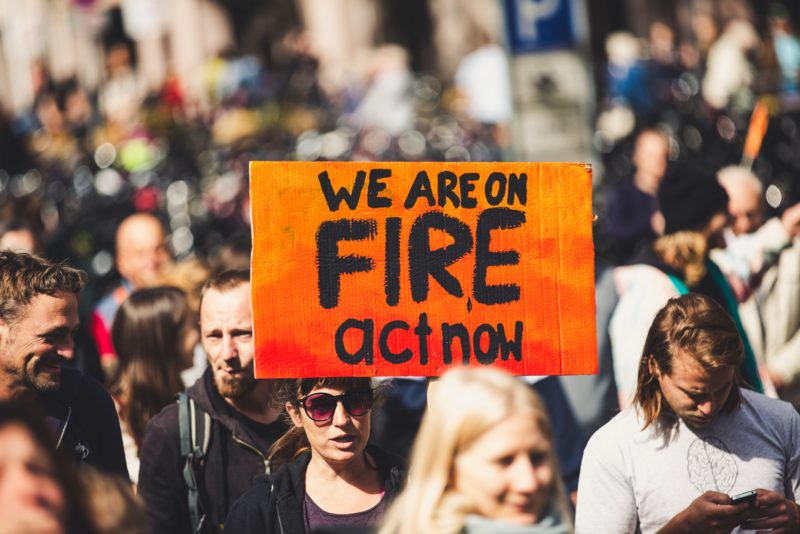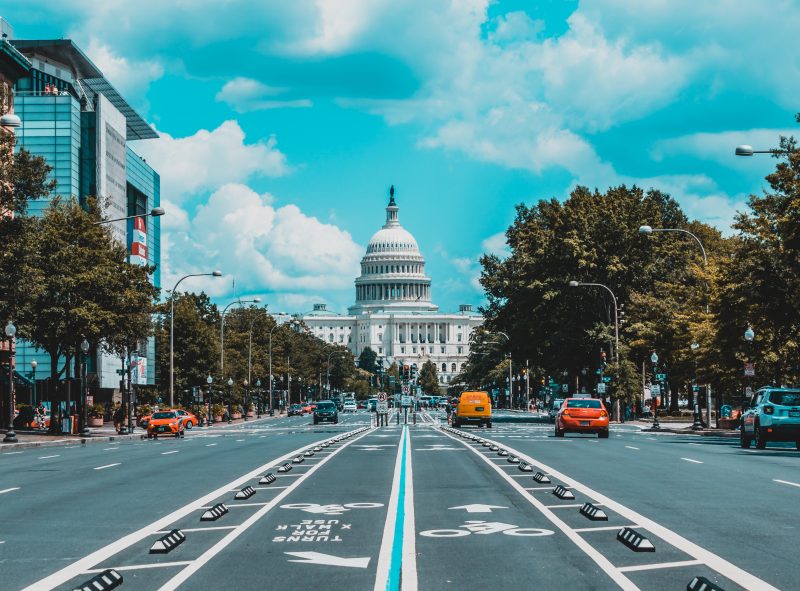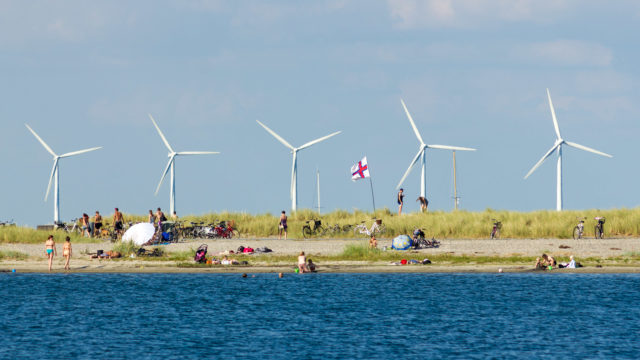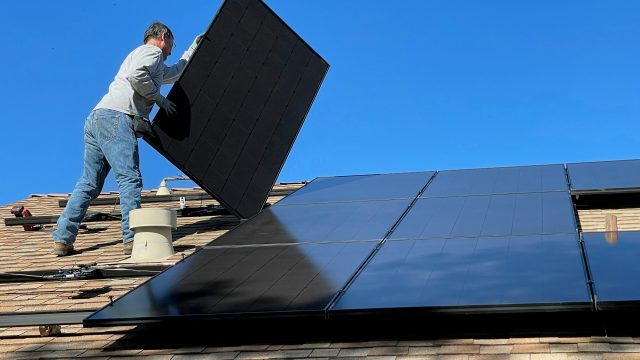Green recovery is the only sane response to COVID
We must make sure that in rebuilding from the current crisis, we don't lock ourselves into the next one, says GEC convenor Oliver Greenfield

January 2021, month 14 (approximately) of the COVID 19 crisis, with the virus at its peak in Europe and the Americas, and the first glimmers of the mass vaccination programme required to a stop a mutating enemy. The impact now to people, society, economies, is so profound that this experience will surely sit alongside the world wars and the Great Depression as a collective tragedy.
Even though we are still in the midst of it, is it right to ask what will be the legacy of this moment? From the Great Depression came Roosevelt’s New Deal. From World War 2, the Marshall Plan, the United Nations, the European Union. Yet, even in this dark moment, with our only saviours science, government intervention and community care, we know that barrelling towards us are climate change, mass extinction, and further societal breakdown.
“ If the world was sane, recovery from this moment would not ignore these looming catastrophes. It would not waste the global solidarity born of this collective suffering.”
If the world was sane, recovery from this moment would not ignore these looming catastrophes. It would not waste the global solidarity born of this collective suffering. If the world was sane it would take hold of this crisis and create a shared path towards work, health and sustainability. It would work together to create a green and fair recovery, pooling joint investment, and lay the foundations for new ways to live, work and prosper not just for the next decade but for the next century.
A radical break with the past
COVID-19 has prompted a seismic shakeup of the global economy. Governments are spending and intervening in markets on an unprecedented scale; businesses are having to innovate or face collapse; and communities and citizens are adapting to entirely new ways of living, consuming and working. COVID-19 is a once-in-a-generation moment to prompt economic change at scale.
The pandemic has exposed the fragility of our economies and societies. That exposure must surely prompt us to address the underlying causes of the systemic risks we face, including a failure to manage our relationship with nature. And it must ensure we do not blindly commit to a recovery plan that merely accelerates and intensifies the next crisis.
So far, this does not seem to be happening. Governments around the world are, understandably, still mostly focussing on the immediate the health crisis and economic stabilisation. Some are starting the process of stimulating a return to business as usual, which includes acceleration of practices that increase underlying systemic risks (social inequality, climate breakdown, and biodiversity loss).

But in general, where stimulus is being deployed it is not adequately green. And few governments are adequately planning for what happens next. Some governments and businesses are serious about structural economic reform, but for these the challenge is aligning economic recovery from COVID with inclusive, nature-positive green transition pathways – and there is not yet a clear or consensus picture of what ‘a green recovery’ looks like.
What is a green recovery?
The green recovery has emerged around the world as one of the key policy pathways out of the COVID-19 crisis. It generally captures the idea that the economic response to COVID offers an opportunity to effectively address underlying environmental and social challenges.
Of course, that’s easier said than done. Governments must provide short term green stimulus, but also look to structural changes which make economies and livelihoods more resilient to climate change, biodiversity collapse and widening inequality. Change needs to happen across several fronts, and at a pace commensurate with the challenge. It is essential that the opportunities of a green recovery prevail beyond the ‘stabilisation’ and ‘stimulus’ phases; and instead grow en masse, across different sectors, geographies and industries towards a long-term structural green economic transformation.
Governments must lead the way
What this moment demands is a coherent international response (green recovery) involving all of society but lead by governments.
Governments need a clear vision and understanding of Green Recovery – which spells out stimulus priorities, conditionality options, financing solutions (public & private debt, monetary, multilateral), guidance for administrative and budgeting processes, frameworks for longer term policy and investment priorities, and practice for ensuring business, civil society, and citizens are engaged and supportive.
“ A green recovery offers an opportunity to effectively address underlying environmental and social challenges through our policy responses to COVID-19.”
Businesses and the private sector have a big role to play, and must feel confident to support government policy and investments with their own green recovery actions and investment. Where legislative change or higher regulatory standards are needed for a green recovery, businesses need to be brought on board and contribute constructively for a strategic approach.
Civil society must ensure they keep the pressure on leaders for full and transparent deployment, and support policy decisions that are moving in the right direction. Banks and financial service providers need to mainstream the parameters of a green recovery, and ensure common priorities for allocation of investment to green recovery across public and private sectors.
Media need to communicate to their audiences that this is a fork in the road, an existential choice – and scrutinise the decisions and actions of all stakeholders in the context of escalating risk and the choice for a safer, more prosperous future.
The time is now
Given the multiple waves of COVID impact on economies and societies around the globe, recovery planning must be suited to all three phases – stabilize, stimulus, new normal – of response planning. Policy thinking tends to be dominated by stimulus measures that quickly increase aggregate demand, jobs and social protection through expansionary fiscal and monetary policies, as well as targeted industrial policies with high economy-wide spill-over effects, all framed in the context of politically contested terrain of public deficits, real or perceived debt constraints, and extremely variable fiscal space.
Green recovery clearly also has a short-term role in this kind of socioeconomic rebound, notably in land management, energy efficiency, and other green job rich sectors. But an important difference is that green recovery is also about the need to forge long-term sustainability gains (i.e. qualitative leaps in how the economy treats the environment), and exploit the moment crisis to set an ambitious policy agenda for green structural reform.

Six recommendations for impact
So what we (the broader development and Green Economy community) could and should do:
- Guidance - Create a strategic guide for governments on green recovery – process and content – which clearly articulates stimulus priorities, financing solutions, budgeting guidance, recommendations for entry points and institutionalising change, investment frameworks, and practical help to engage the support of business, citizens and media.
- Debate - Create a process of societal acceptance, ownership and empowerment that includes private sector, civil society, and finance. Take the green recovery debate into as many national contexts as possible – to explore it, support it, and connect it to domestic issues. Learn and act together with national and grassroots actors.
- Finance - Ensure that the providers of finance, creditors and rating agencies are bought into the recovery plans and develop matching or aligned criteria for allocation of investment or debt sustainability. Institutionalise this green recovery guide across all development agencies.
- Leadership. Build on or encourage the leadership of EU, US, China (and other G7 and G20 nations) and INGOs on green recovery governance and engagement.
- Transparency Ensure grassroots groups and civil society groups are aware of green recovery practice, and keep pressure on governments for stronger implementation – through focusing in on key moments of reporting. Ensure the ‘green recovery’ becomes a key lens to view progress and success at UNFCC COP26, G7, G20, WEF, and CBD COP15, and follow-on processes/agendas.
- Communications: Build a global race to the top communications – using different digital tools to scrutinise progress and report on success or failure. Raise awareness of green recovery framework and opportunities across key economic commentators and decision makers to shape debate.
The GEC will work on all the above and seeks constructive partnership with any organisation to ensure sanity prevails. If you'd like to explore collaboration - please, do get in touch.
- Oliver Greenfield, Convenor, GEC
Photo by Markus Spiske on Unsplash


